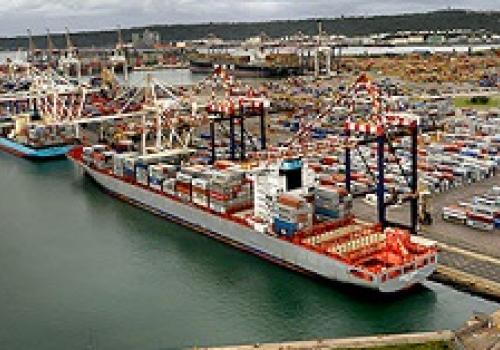The Southern African Development Community (SADC) Trade Related Facility (SADC TRF) has to date disbursed 81% (€18.5 million) of the grant funding earmarked for 12 SADC Member States.
The SADC TRF was established in July 2014 through a Contribution Agreement between the European Union (EU) and SADC. The TRF provides financial and technical assistance to SADC Member States to facilitate greater levels of compliance and implementation of the SADC Trade Protocol (STP) commitments and ensures better preparedness of SADC Economic Partnership Agreement (EPA) States to effectively implement the EPA and benefit from it. The TRF aims to increase overall trade flows within the Region and internationally.
After 90 months of operation, the SADC TRF is scheduled to conclude its work in March 2022. Sustainability of the TRF outputs and outcomes will be ensured by close collaboration with successor programmes such as the Trade Facilitation Programme (TFP) and the Support to Industry and the Productive Sectors (SIPS).
According to the recently published 41st SADC Summit Brochure, the 12 SADC Member States that have benefitted from the grant funding are Botswana, Eswatini, Lesotho, Madagascar, Malawi, Mauritius, Mozambique, Namibia, Seychelles, United Republic of Tanzania, Zambia and Zimbabwe.
The outputs realised by the TRF in capacitating Member States to domesticate the provisions and benefit from the SADC Trade Protocol and SADC- EPA include enhancing customs cooperation resulting in the development of one stop border instruments and coordinated border management systems.
Improving the application of sanitary and phytosanitary (SPS) measures so as to retool laboratories, policy development, development of online systems for issuance of SPS certificates and reporting systems under the World Trade Organisation have also been witnessed under the TRF.
The outputs have also covered trade facilitation under which there has been adoption of online systems for reporting and resolving Non-Tariff Barriers, upgrading of the Automated System for Customs Data (ASYCUDA) and National Single Window clearance systems and training of customs officials, and accreditation of clearing and forwarding agents to build their capacity to lodge correct customs clearance documentation across the SADC Region. ASYCUDA is an integrated customs management system for international trade and transport operations in a modern automated environment.
Under TRF, there has also been trade promotion and development whereby the development of national trade policy; promotion of SMMEs in various sectors to comply with required standards, development of e-commerce policy and electronic platforms/portals for trade has been effected.
The programme has addressed technical barriers to trade through the procurement of equipment and preparation of laboratories for accreditation and capacitating them to provide certification services to industry, development of regulatory frameworks and standard operating procedures.
SADC TRF Success Stories include the development and adoption of policy documents, such as the National Trade Policy in Lesotho, and National Quality Policies in Zimbabwe, Madagascar and Mozambique.
The successes also include upskilling of small-scale gold and gemstone mining and improved use of new technology in farming and aquaculture development; development of value-chain strategies; and development of EPA Implementation Strategies and Action Plans, capacity-building in the areas of SPS and TBTs, including procurement of laboratory equipment; and development of Standard Operating Procedures for the laboratories.
A notable success of the TRF is the significant increase in the production of oilseeds and the development of the oilseeds value chain in Malawi. The oilseeds sector is one of the prioritised export-oriented clusters for economic diversification in Malawi's National Export Strategy.
TRF intervention sought to address the challenges of low yields and low levels of quality in oilseed production which led to processors offering local farmers low market prices and preferring to import the oilseeds.

